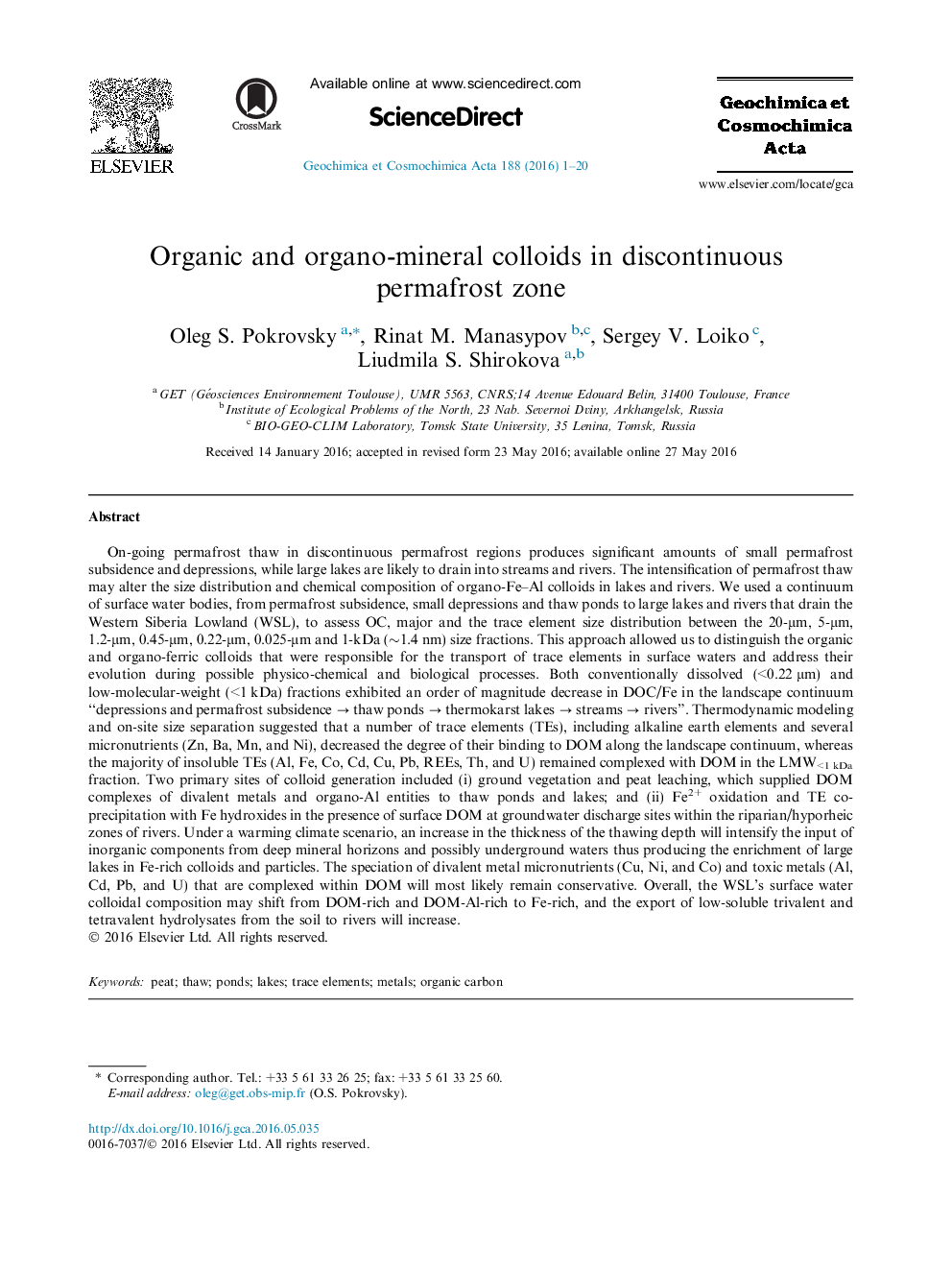| کد مقاله | کد نشریه | سال انتشار | مقاله انگلیسی | نسخه تمام متن |
|---|---|---|---|---|
| 4701758 | 1637969 | 2016 | 20 صفحه PDF | دانلود رایگان |
On-going permafrost thaw in discontinuous permafrost regions produces significant amounts of small permafrost subsidence and depressions, while large lakes are likely to drain into streams and rivers. The intensification of permafrost thaw may alter the size distribution and chemical composition of organo-Fe–Al colloids in lakes and rivers. We used a continuum of surface water bodies, from permafrost subsidence, small depressions and thaw ponds to large lakes and rivers that drain the Western Siberia Lowland (WSL), to assess OC, major and the trace element size distribution between the 20-μm, 5-μm, 1.2-μm, 0.45-μm, 0.22-μm, 0.025-μm and 1-kDa (∼1.4 nm) size fractions. This approach allowed us to distinguish the organic and organo-ferric colloids that were responsible for the transport of trace elements in surface waters and address their evolution during possible physico-chemical and biological processes. Both conventionally dissolved (<0.22 μm) and low-molecular-weight (<1 kDa) fractions exhibited an order of magnitude decrease in DOC/Fe in the landscape continuum “depressions and permafrost subsidence → thaw ponds → thermokarst lakes → streams → rivers”. Thermodynamic modeling and on-site size separation suggested that a number of trace elements (TEs), including alkaline earth elements and several micronutrients (Zn, Ba, Mn, and Ni), decreased the degree of their binding to DOM along the landscape continuum, whereas the majority of insoluble TEs (Al, Fe, Co, Cd, Cu, Pb, REEs, Th, and U) remained complexed with DOM in the LMW<1 kDa fraction. Two primary sites of colloid generation included (i) ground vegetation and peat leaching, which supplied DOM complexes of divalent metals and organo-Al entities to thaw ponds and lakes; and (ii) Fe2+ oxidation and TE co-precipitation with Fe hydroxides in the presence of surface DOM at groundwater discharge sites within the riparian/hyporheic zones of rivers. Under a warming climate scenario, an increase in the thickness of the thawing depth will intensify the input of inorganic components from deep mineral horizons and possibly underground waters thus producing the enrichment of large lakes in Fe-rich colloids and particles. The speciation of divalent metal micronutrients (Cu, Ni, and Co) and toxic metals (Al, Cd, Pb, and U) that are complexed within DOM will most likely remain conservative. Overall, the WSL’s surface water colloidal composition may shift from DOM-rich and DOM-Al-rich to Fe-rich, and the export of low-soluble trivalent and tetravalent hydrolysates from the soil to rivers will increase.
Journal: Geochimica et Cosmochimica Acta - Volume 188, 1 September 2016, Pages 1–20
